Rakhi Jayashankar's Blog, page 55
December 26, 2017
Bombay Swastika by Braham Singh- Review
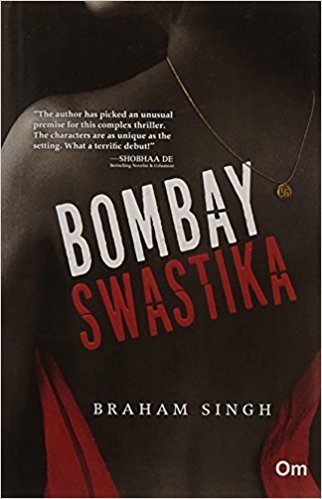
Book Name - Bombay Swastika Author - Braham Singh Publisher - Om BooksBuy books from Amazon
My ReviewRating : 4.0
The story could not be elaborated further since it might serve as a spoiler. One after the other happenings makes the reader engaged but story-line is not the highlight of the book. What served as the icing on the cake is the character crafts. Each character is unique, fresh and portrayed in such manner that the reader would be forced to match them with someone they know eventhough the story takes place in another era. Salim, Arjun, Sethji, Tufan, Andhi ma- Every character is given the due space along with Ernst. His parents and wife who doesn’t come directly in the picture are given their space as well. Author has impeccably interwoven the history an fiction. The Himalayan Blunder ( Indo-China war), Dr. Homi J Baba, Mohammed Ali Jinnah etc are dragged into the fiction without skewing the facts.
Before commencing the reading spree I would like to give an invective alert for the readers, which could be visible if you get to read the blurb, which in turn could be reasonable considering the kind of topic dealt with but after a point, it goes overboard. The first half of the book is interesting and fast paced but towards the second half, the pattern of narration becomes monotonous but the suspense behind the stolen bag keep the readers going. With a little rework for maintaining the focus on the plot the book could be in another level. Nevertheless author has covered it up with the narration but for the expletives.
This review is in return of a free book from the publisher (http://www.ombooksinternational.com/)

Published on December 26, 2017 06:38
December 18, 2017
Confessions of a Software Techie by Ramakrishna Reddy- Review
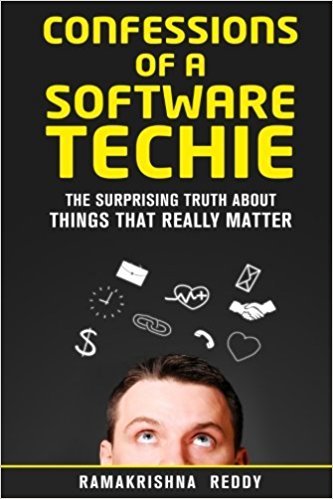
Book Name - Confessions of a Software Techie Author - Ramakrishna Reddy Publisher -Create Space Indepedent PubBuy books from Amazon
My ReviewRating : 4.5
If I am asked to define the book in a sentence, I would like to say that this is the book that I would want to gift my kids when they grow up. From professional to personal, author has dealt variety of topics. My point of reference with the author was his book ‘The Utlimate Speaking Survival Guide’ and hence I was expecting a small upto the point creation about IT companies, which could be finished in a few hours or a day. Author has apparently surprised me with this creation which is a far cry from the concise abstract.
The introduction itself is a pointer about what to expect further. What impressed me the most is the brief account of author’s relation with his father, who always used to say ‘ No’, which, the author positively recognises as a tactic to handle the harsh realities of the real world. This is what the current mollycoddled generation lacks the most.The first chapter, Ten lessons not taught in class is an eye opener for everyone, irrespective of the age and experience. The fact that every employee need to be a salesman is applicable to everyone, through which author implies that everyone should sell themselves to the employer. The qualities of honesty and humility are analysed and presented in a fresh perspective. Author tells why solution is important not the problem.The cardinal rules specifies the professional and interpersonal tips for the employees. Next chapter is about prioritising and explains how to get more done with less.
The next chapter how to write effective emails tops my priority list. In the current scenario when all the correspondence is through emails, it is quite relevant that everyone should know the dos and don’ts. The next chapter ‘Speak sense into your listeners’ is an abstract of his Book ‘Public Speaking’. Chapter six is the most important book, which is the prime representative of the title. The second part of the book is about the personal life. The second part is substantially a big brother’s advice to the younger ones, and the same could not be counted relevant in the whole concept of the book.
The book is relevant not only to the techies but to the people working in other areas as well. The title could be Confessions of an employee or something of the similar sort because the current title will thin out the target readers. Overall the book is a good deal for the Indians in the digital format since getting the paperback from the global store will cost you a good fortune.
This review is in return of a free book from the author

Published on December 18, 2017 03:40
December 15, 2017
It Happens by Karan Sharma -Review
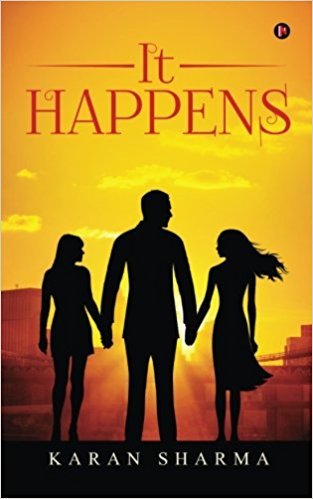
Book Name - It Happens Author - Karan Sharma Publisher - Notion PressBuy books from Amazon
My ReviewRating : 3.0
Rohith is shocked to see that the generally shy Gautam propose to forty year old Briganza. His surprise soars high when he learns that what he saw was apparently a trial before proposing to Roshni who is their boss as well as a thirty seven year old lady, nearly twelve years elder to Gautam. Rohit tries make his friend see sense and barrage him with questions regarding the problems that could prop up between the duo because of their age difference. Gautam pretends to ignore his best friend but what he had said did make a mark in Gautam's conscience, which in turn forces him to recheck his decision to skip his on site assignment in Singapore. He leaves India without giving an explanation to Roshni. Life in Singapore makes him realise the depth of his love for Roshni. Will Gautam go back to her? Will his family accept her? Will their love overcome the age barrier? The rest of the book gives us the answers.
The plot itself is different from the usual puppy love and the topic has a lot of possibilities, being an almost untouched area in fiction. The beginning of the book is interesting. Introducing Rohit and presenting Gautam through his eyes is refreshing start. The conversation between friends regarding the future of the relationship is also up to the point. Each point put forth by Rohit is the representation of the apprehension that is bound to form in the mind of the readers. Gautam's dilemma regarding his future is well conveyed. But thenceforth author loses the grip of the narration. Gautam's closeness with Payal could have been portrayed differently. Boy kissing a girl mistaking her for his girlfriend is an overused scenario and quite difficult to absorb in the current era. While Gautam realises his love for Roshni, it is heart-melting. Later when Roshni's friend Sonal gives her a class, being a woman myself,how things put forward did not go down well with me as a reader. How would a thirty seven year old woman be termed as an ageing lady and her health is taking its toll and related arguments? If it is so, how would Gautam be active when he is forty eight. These two contradictory statements were like an eye sore for me. A woman in her thirties is ageing and a man in his forties active. How is it so?
Thankfully author has spared us of the unwanted making out sequences unlike other books of this genre. This will earn some brownie points from me. The narration is simple yet engaging. Author has done good amount of homework and the editors have done a decent job as well. Author could have utilised the possibilities of the fantastic plot in a better way.
Overall the book is a not so unique portrayal of a unique plot.
This review is in return of a free book from the WritersMelon

Published on December 15, 2017 03:43
December 13, 2017
The Imperfect by Prasoon- Review
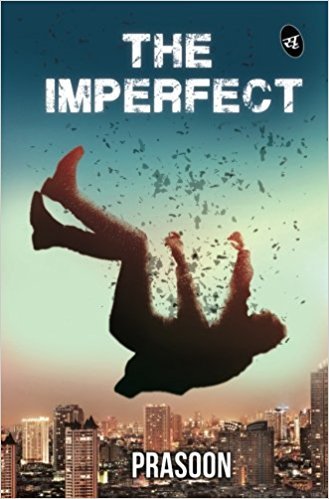
Book Name - The Imperfect Author - Prasoon Publisher - Srishti PublicationsBuy books from Amazon
My ReviewRating : 3.5
The beginning of the plot was nothing exceptional. An average student, Rishabh, who plays truant to get pathetic results in his board exams. Needless to say he has a group of ogler friends who crack mean jokes about women and a girl who is his best buddy whom he secretly admires. While Aarti, the love of his life and his friends get admission in engineering colleges, Rishabh continues to try for another round of entrance examinations.After spending a year behind the entrance coaching drama, he manages to get admission in a payment seat in the same college where Aarti studies, as her junior. While she saves him from the ragging bullies, she starts hanging around with the same guy to Rishabh's Dismay. His classmates Karan and Ruhana becomes his next set of buddies. While Rishabh understands that Ruhana is his secret admirer, he rejects her advances due to his immaculate love for Aarti. Things get complicated when Rishabh ends up having a ugly spat with Aarti and their beautiful friendship reaches an end note.
Ruhana realises Rishabh's true love for Aarti and respects his feelings but eventually lust takes over love and they end up making out while each of them admits that it would be the first and last time. Rishabh manages to get a job by virtue of his father's contacts. The pure vegetarian Rishabh becomes a pure non-vergetarian addicted to porn movies. Rishabh's life takes a permanent U-turn when he visits Ruhana on his trip to Hyderabad. Something happens between them that makes Ruhana curse him to a life that Rishabh has never imagined. Making her curse come true, Rishabh goofs up his marriage day. Needless to say that the marriage was called off.Aarti comes back to his life but he is heartbroken to know that she is married and a mother too. After years of pointless life, Rishabh gets married to a girl whom he apparently doesn't love till she breathed her last. His story doesn't end there. Thenceforth unfolds a tale of how a man who did everything wrong transforms into a national idol through a path of repentance.
The overall plot can be counted as yet another YA Romance but the narration and the plot development stood out. While reading the making out sequence between Rishabh and Ruhana, I almost gave up on the book since I have already mentioned in many of my reviews that I don't approve of squeezing in making out sequences unduly but as the story proceeds the scene is perfectly justified because otherwise it would not have been possible to register the further developments. One major doubt that dominated my mind was whether all men are obsessed with women's midriff and cleavage. Rishabh's character portrayal is the highlight of the book. The character is most realistic and balanced. He is neither the Mr. Goody two shoes nor the felon. His interaction with Ruhana at different instances is an example for this. The importance to relations is another point that has made the book likeable. Through Rishabh's life author has conveyed a beautiful message of why it is important to forgive and move ahead. The book shows us various levels of friendship and shows the different dimensions of the same. Rishabh's relation with his mother could have been portrayed in a better light. Eventhough she taunts him about his failures, it is difficult to believe that the mother-son relation is barren to such extend. This might be purely personal opinion of a mother with two sons and a daughter since I could not find myself having a distant relation with any of the kids.
Overall the book is a reasonable romantic story with all the elements for a bestseller but if you are looking for an intense tale with emotional turbulence, this is not the right one for you.
This review is in return of a free book from the publisher

Published on December 13, 2017 03:15
The Imperfect by Prasson- Review

Book Name - The Imperfect Author - Prasoon Publisher - Srishti PublicationsBuy books from Amazon
My ReviewRating : 3.0
The beginning of the plot was nothing exceptional. An average student, Rishabh, who plays truant to get pathetic results in his board exams. Needless to say he has a group of ogler friends who crack mean jokes about women and a girl who is his best buddy whom he secretly admires. While Aarti, the love of his life and his friends get admission in engineering colleges, Rishabh continues to try for another round of entrance examinations.After spending a year behind the entrance coaching drama, he manages to get admission in a payment seat in the same college where Aarti studies, as her junior. While she saves him from the ragging bullies, she starts hanging around with the same guy to Rishabh's Dismay. His classmates Karan and Ruhana becomes his next set of buddies. While Rishabh understands that Ruhana is his secret admirer, he rejects her advances due to his immaculate love for Aarti. Things get complicated when Rishabh ends up having a ugly spat with Aarti and their beautiful friendship reaches an end note.
Ruhana realises Rishabh's true love for Aarti and respects his feelings but eventually lust takes over love and they end up making out while each of them admits that it would be the first and last time. Rishabh manages to get a job by virtue of his father's contacts. The pure vegetarian Rishabh becomes a pure non-vergetarian addicted to porn movies. Rishabh's life takes a permanent U-turn when he visits Ruhana on his trip to Hyderabad. Something happens between them that makes Ruhana curse him to a life that Rishabh has never imagined. Making her curse come true, Rishabh goofs up his marriage day. Needless to say that the marriage was called off.Aarti comes back to his life after but he is heartbroken to know that she is married and a mother too. After years of pointless life, Rishabh gets married to a girl whom he apparently doesn't love till she breathed her last. His story doesn't end there. Thenceforth unfolds a tale of how a man who did everything wrong transforms into a national idol through a path of repentance.
The overall plot can be counted as yet another YA Romance but the narration and the plot development stood out. While reading the making out sequence between Rishabh and Ruhana, I almost gave up on the book since I have already mentioned in many of my reviews that I don't approve of squeezing in making out sequences unduly but as the story proceeds the scene is perfectly justified because otherwise it would not have been possible to register the further developments. One major doubt that dominated my mind was whether all men are obsessed with women's midriff and cleavage. Rishabh's character portrayal is the highlight of the book. The character is most realistic and balance. He is neither the Mr. Goody two shoes nor the felon. His interaction with Ruhana at different instances is an example for this. The importance to relations is another point that has made the book likeable. Through Rishabh's life author has conveyed a beautiful message of why it is important to forgive and move ahead.
Overall the book is a reasonable romantic story with all the elements for a bestseller but if you are looking for an intense tale with emotional turbulence, this is not the right one for you.
This review is in return of a free book from the publisher

Published on December 13, 2017 03:15
December 10, 2017
Jaffna Street by Mir Khalid- Review

Book Name - Jaffna Street Author - Mir Khalid Publisher - Rupa PublicationsBuy books from Amazon
My ReviewRating : 4.5
Of late I have been reading back to back Kashmir based books-both fiction and non-fiction, that by now there has started am invisible thread that connects me as a reader as well as indian to the paradise. The word paradise can be metaphorical and contrasting. While most of the books tell us the stories of our soldiers and their heroism, Jaffna Street stays different with the detailed, authentic and real experience of the Kashmiri Pandits and Kashmiri muslims amidst insurgency, counter-insurgecy, spearatism as well as terrorism. To know that war is not merely between Indian and Pakistan armies or terrorists but there has been a undelivered tale of pain and indecisiveness in the lives of Kashmiris when the indsurgents assorted to violent measures to attain their aim of independent Kashmir.
A chill runs down the spine when we read how the insurgent leaders follow the cycle of being the leader and end up as a civilian or a corpse. The life of Zee and Ace in the first chapter is perfect to begin the memoir, as I would like to term the book. Zee is one person who is a quintessential King turned popper. The fact that Zee survived the attacks to tell his tale is surprising and unbelievable like ana ction thriller. Needless to reinforce that Zee is no hero but manages to spread his heroism. From the tumultuous account on Zee and Ace's life the tale of Veer Munshi is a respite for the readers only to go back to the internecine conflicts within the insurgent groups. Thenceforth the tale is gruesome, unblievable and gut wrenching. It is unblievable that people can endure so much of difficulties and instability in their lives.
Gangland, though another extension of the conflicts, has an innocent side of the student egos and puerility. Redemption stone is the perfect ending to the era. Life of Mac is representive of what goes around comes around.
The book is divided into three parts. First part is the war 1990 onwards, which contains the first hand experience of th author with crystal memories and memoirs from the protginsts themselves and their cronies. Second half Reveille (1950-1989) is more about how the lives of people have been and the repeercussions in the families. The third part (1947 - 1950) of course is the reconstruction of the memories. While the first part justifies the title Jaffna street and represents the blurb, the second and third part lacks the intensity of narration both in terms of the anecdotes as well as literary finesse.
Overall the book can be termed as the most unique and one of the most realistic depiction of life in Kashmir from 1947 till date.
This review is in return of a free book from the publisher

Published on December 10, 2017 23:09
December 6, 2017
IT @ D-day by Anirban Basu- Review
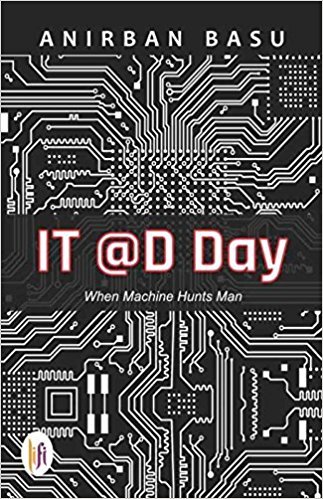
Book Name - IT @ D-day Author - Anirban Basu Publisher - Lifi PublicationsBuy books from Amazon
My ReviewRating : 3.0
The plot begins with a scenario of unnatural deaths of three unrelated persons. It doesn't take much time for Dr. Siddharth Mukerjee, the scientist to realise that it is his creation I-Tend, that is behind this bizarre phenomena of people breathing their last on picking up the telephone receiver. Heartbroken, Dr. Mukherjee along with Dr.Bagchi decide to shutdown the machine to avoid further mishaps but little did they know that their heart borne, technology borne child has become the Frankenstein. Within minute the two doctors falls down and two motionless bodies remain. Simultaneously Dr. Bagchi wakes up at the table of Dr. Chowdhary's experiment table. Later Dr.Mukherjee wakes up to see that Dr. Bagchi has disappeared. How did Dr. Bagchi be present at two different places simultaneously? Who is the second one? Who is real? Will Dr. Mukherjee be able to shutdown I-Tend?
The plot has a lot of possibilities when it comes to fantasy as well as suspense. Did the author utilize the possibilities to the fullest extend is something debatable. The book is surely inspired from different books. While reading the scenario of the creation turning against the creator,the name of Frankenstein came to my mind and the name is mentioned in the book as well. Likewise the cloning part could be counted as an inspiration from the controversy that occurred when the first clone was created. Basically there is not much imagination when it comes to the sci-fi part. The ideas are mere inspirations and any degree of loyalty cannot be attributed. The pace of the plot is mediocre but consistent. Apart from the mono-dimensional scenario, the background of the characters are not portrayed. Nevertheless the idiosyncrasies of the characters are conveyed with conviction. The cover page reflects the overall mood of the book.
Overall the book is a decent YA Sci-Fi
This review is in return of a free book from the publisher

Published on December 06, 2017 05:54
November 30, 2017
Letters from Kargil by Diksha Dwivedi- Review
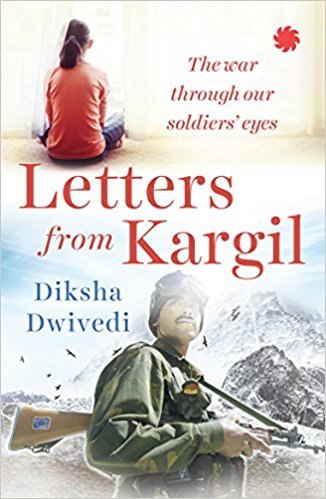
Book Name - Letters from Kargil Author - Diksha Dwivedi Publisher - JuggernautBuy books from Amazon
My ReviewRating : 4.0
Diksha, through her book Letters from Kargil, tell the readers about the war through the soldiers' eyes. Through the letter that the soldiers sent their loved ones. The book portrays the difficulty of the seemingly impossible task in hand when the Operation Vijay was announced. Right from the first attack to the announcement of Operation Vijay to the victory, each an every happenings are systematically depicted with the help of the letters from the soldiers. Author has done a stupendous job in collecting the letters from the families of the martyrs.
For Diksha, as a kin of the deceased, it would have been opening the wound while goind through the letters but she has done an excellent job at that, keeping the emotions aside. The book is short but will never let the readers feel that it is not priceworthy due to the size but on the other hand the value of the book is beyond the size or word count. It is practically impossible for the laymen to imagine the level of difficulty faced by the soldiers at the border. " Twenty for hours without food and water and I have started urinating blood." Can you imagine such a situation in a fiction book. Will you believe if it is humanly possible? No, because our soldiers, our heroes are slefless superheroes and there cannot be a better tribute to them
Salute to the great souls who embraced the eternal sleep to let us sleep peacefully and hats off to Diksha for her effort
This review is in return of a free book from the publisher

Published on November 30, 2017 04:14
November 29, 2017
Fate's Design by Subhashish Dey-Review
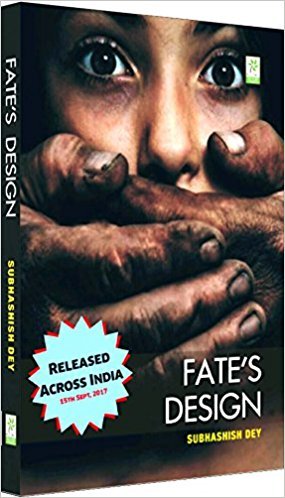
Book Name - Fate's Design Author - Subhashish Dey Publisher - Good Times Book Pvt LtdBuy books from Amazon
My ReviewRating : 3.0
The plot begins with a little girl, Natalia, being kidnapped right from the cosiness of her bedroom to another world. The kidnapper is asked to kill the girl after getting the ransom amount. The parents, Irina and Andrei, who lost their kid, waits to see their daughter back, after paying the ransom, only to identify a body that was washed over and two days old. Heartbroken, Irina decides to leave her husband Andrei and son Felix. Anastasaii, who was given the task of kidnapping and murdering the kid chooses to save her by taking her away from his boss who has delegated the task.There starts a new life for the characters which forms the second part of the plot. Irina becomes a bar singer, Felix and Andrei slowly puts the pieces together and builds their own life. Natalia grows up as Anastasaii's daughter. The part of the story is full of twists and suspense and I leave it to the readers to decides if it worked out or not. The third part of the book is about a pop star Anterope who in turn unites the family of Andreii. Who is Anterope? What is her story? Will he family unite?
Overall narration is matured and looks professional but in between some part of the narration becomes amateurish. We could give a benefit of doubt for the age of the author but some of the dialogues in between forces me overlook the fact that a kid wrote the book. For instance the dialogue "Mom, are you into girls? " Keeping that in mind readers could assume that the author is way too matured, well read and experienced for his age. While the plot reaches the second half, how the plot would be progressing becomes predictable. The character craft is where the plot falls off with respect to the comparative graph. The pace of the plot is not consistent. Nevertheless the effort that is invested in the book could not be overlooked. A strong message about relations is the highlight of the book.
Overall the book is a simple read with slightly complicated plot.
This review is in return of a free book from the publisher

Published on November 29, 2017 22:31
November 26, 2017
History And Mythology—mixing a Molotov cocktail- Guest Post by Braham Singh
Historical fiction and Mythological fiction have been two terms that have been used as synonyms by many readers and even the witers these days. What is the real trick? Is History and Mythology all the same?Braham Singh, author of Bombay Swastika enlightens us about the whole business of genres in his guest post, exclusively on Outset
History And Mythology—mixing a Molotov cocktail
For my novel, Bombay Swastika, I went researched theVaisnava-Sahajiya cult that arose in Bengal in the sixteenth century. Theirs was an intensely emotional attempt to reconcile the sensual and the ascetic. For one, the Sahajiya speak of a divine garden within each of our heads we can’t ever enter. They call it The Place Of The Hidden Moon. It’s where Lord Krishna resides to energize the Universe by continuously copulating with his consort, Radha-devi. Between you and me and the rest of us, there’s of course no such thing and the Sahajiya myth exists to make a point.
So do the Ramayana and Mahabharata, as does the Bhagwad Gita—that gem the Mahabharata carries within. These epics weren’t written in one go, or by any one person. They encompass lessons put together over millennia by different teachers who have reached across time to pass them on. Once we get diverted by attempts at proving the God Ram actually existed, or claim that a God called Krishna built Dwarka somewhere between 30,000 years to 6,000 years ago depending on who’s talking, we’ve kind of, lost the plot, and those teachers reaching out to us from the past, they wasted their time.
That mythological garden in our heads declared off-limits by the Sahajiya, it’s where they say Lord Krishna loves Radha who’s married to another and therefore unattainable in her entirety; she too is off-limits, so to speak. But he still loves her. That way, the Sahajiya myth explains, the Lord teaches us to reach for the impossible. You are unable to completely get to where you aspire to be, but so what? Getting as close as possible is what matters—the journey is everything. The myth serves a purpose only if we understand the allegorical reference. Were we to insist such a garden actually exists, the focus would shift to divinity and worship and miracles at the expense of the lesson waiting to be taught.
Whether a Ram-like king did exist, or warring clans meted it out at Kurukshetra, and whether there was a Krishna-like leader of the Yadav clan, should be left to professional historians. Who knows, Lord Krishna could well be authenticated in some future research undertaken objectively. For now though, the closest I’ve come to being semi-impressed, is by one Dr. N S Rajaram, even though his claims remain rich in conjecture and let’s not hold our breath waiting for a peer review. As far as the Ramayana and Mahabharata are concerned however, this is neither here nor there.
All this would add up to nothing, except that mythology has a track record. We have endured a world war to try debunking that Aryan myth and it still has legs. Nationalist and religious parties are especially apt at applying mythology to win over minds and savage enemies. We see it happening all around us. Neo-Nazis proudly march across America and Europe. In India, fundamentalist Hindutva is permanently changing Hinduism. Various Islamist movements pollute the Middle East with murderous stupidity. Then there's Putin's Russia—looming over all of these vicious little buggers clamoring for attention. Because it's not just violence that’s common across these politico-religious movements. There’s a striking commonality in right wing memes across the globe that simply can't be a coincidence; or maybe it's something to do with the times. A delicious conspiracy theory bubbles in my head, but best leave it for now.
Speaking about Bombay Swastika before an expatriate audience in Mumbai, I was on the obvious nexus between the Vedic Swastik symbol and a Nazi Swastika, when two German gentlemen corrected me. The Swastika was taken from Celtic history they insisted, and had nothing to do with the Vedic Swastika. What about the name then? Well, in Germany we don’t call it the Swastika. It has its origins in Aryan folklore, you see. And where did the Aryans come from? From the Nordics of course, as we all know. But we don’t and no, they didn’t. The Aryan tribes, if they existed at all, are universally acknowledged to originate in the Caucasus. The point being, history is based on facts; or it can be anything you want.
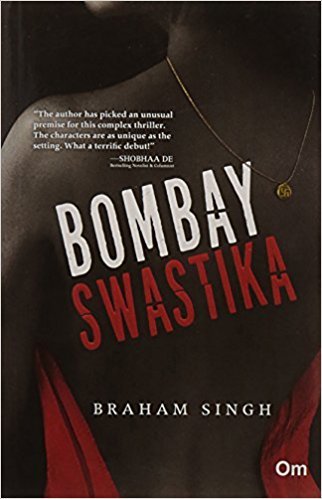
If you want, a Hindu King and not the Moghuls built the Taj Mahal, even in the face of enough evidence to the contrary. Or, Mohammed did receive the word of God from the Angel Gabriel; even though the rational explanation would be that he borrowed from and simplified the monotheist material around him. And if you want, Noah did fit two of every species into his houseboat and Jesus rose from the dead and if we are to believe the current Indian Prime Minister, Lord Ganesh with his cute elephant head was real as real can be.
Whereas, you know heart of hearts, as do I, these are myths—to be either dismissed as with the Taj Mahal claim, or studied for their lessons from the past. Why detract from the beauty of the Bhagwad Gita or the wisdom inherent in so much of the Koran just because of fundamentalist urges, is beyond me. Stories spun around mythical figures are parables, not history, nor are they historical fiction. Although going by Amazon India, you wouldn’t know. Searching under Historical Fiction, the first title to pop up was Immortals of Meluha, a book on Lord Shiva. A novel about Ram’s heroic Sita was actually #1 a few months ago, until Shiva came displaced her—one mythological character taking down the other, neither having anything to do with history, but who’s complaining.
To nudge Lord Shiva, or Sita or Ram or Krishna over into history from their current mythological status requires some doing before objective eyes. However, there are vast legions out there that need to believe in this and so, casual extrapolation appears enough. There does seem to be a laissez faire approach to Hindu research in India, making it a lot easier to establish nonsense while refuting facts.
Is it then, that Indian research is typically shoddy? Because it is not. R C Mazumdar and Romilla Thapar are why I am hooked on history in the first place. Their expertise did it for me, not Western historians. Also, being killed by bandits didn’t harm Mazumdar’s case amongst young wannabes. He isn’t there anymore, but one also doesn’t see Thapar work on resurrecting Krishna any time soon. I don’t know what her religious proclivities are but she appears professional enough to remain secular at work. Professional historians don’t typically champion mythology. They know any such thesis would likely crumble under peer review. The faux-ones who do, wouldn’t know how to apply due diligence in the first place, and don’t care. They have to arrive at a preconceived conclusion for their host of believers. Conjecture is enough.
For the rest of us though, it isn’t. There can be no let up on due diligence demanded of anyone venturing to prove say, Krishna’s existence a historical fact. Just telling us he existed based on astrological evidence or conjecture, doesn’t buy it. Yet, there’s no let up.
It was on February 18, 3102 BC, we are asked to believe, that Krishna breathed his last on the banks of river Hiran in Prabhas Patan, after living 125 years seven months and six days. He died at 14:27:30 hours, according to a paper presented by Swami Gyananand Saraswati, chairperson of the Varanasi-based Adi Jagatguru Shankaracharya Sodh Sansthan at a gathering of scholars, according to the Times of India dated September 8, 2004, under the headline, Lord Krishna Lived 125 Years.
The Swami goes on to elaborate how they arrived at the date with such precision. "Certain dates related to his life taken from the scriptures were then fed into a software along with Krishna's characteristic traits for an astrological calculation to prepare his kundli." Few things I’ve read are more cringe-worthy.
The above claim could be laughed off, except that the Times of India chose to publish it as serious news. Swami Gyananand’s research by the way, took a quick three months and I’m told the conclusions have begun to creep into school textbooks. In comparison, it took Audrey Truschke, an Assistant Professor of South Asian Studies at Rutgers, ten years to arrive at some basic conclusions on Persian-Sanskrit syncretism in the Moghul court. That then, is the difference between objective, academic due diligence, and the variety used extensively these days to arrive at premeditated conclusions.
So, there we have it. Three months to arrive at unbelievably precise dates about a mythological figure. Versus, ten years of hard work to conclusively establish what was anyways known since my school days: that Hindu culture and Sanskrit literature permeated every aspect of life in the Moghul court. In spite of that, the news about Krishna was received with awe, and Truschke’s conclusions with outrage.
More than one patriotic Indian over the years has informed me that Audrey Truschke, and Wendy Doniger before her and James Laine before her and Louis Malle before him, have an axe to grind. The West is out to get us. That someone can openly assert a Western scholar would spend ten years to write a book on Sanskrit-Persian syncretism just to ’get us’ would be priceless, if it wasn’t so depressing. And if that is the case, then the West is out to get its own God too, because it demands a similar proof from those claiming Jesus is a real, historical figure.
This persistent demand for proper proof stems from a paucity of contemporaneous Jesus references from that period. In fact, outside of the Bible, there is pretty much no reference to a person named Jesus. Other than in the works of the Jewish historian Flavius Josephus, who covered the period 37 BC - 100AD in his writings. There, we do find a reference to Jesus in a paragraph renowned as, Testimonium Flavianum. The only problem being, the Testimonium Flavianum has been declared a forgery on multiple occasions and by multiple sources. Are observant Christians unhappy with this whole thing? You bet. Are they baying for blood? Not to my knowledge. But even if they were, challenging a religion doesn’t typically fire up murderous mobs in the West. In India it would, and the threat of religious violence permanently bubbles beneath the national fabric.
Should Krishna then be given a pass? The answer for our own sake, is no. Were European Indologists once dismissive of Hinduism? Yes, and who knows, probably some still are. That still doesn’t make Krishna real. To establish him as flesh and blood requires the same rigorous proof we ask for the existence of Jesus outside of the Bible, or proof that Mohammed indeed had a conversation with the Archangel Gabriel.
However, here’s some proof from the smorgasbord on offer: ’When (Krishna) came 5000 years ago, millons of eyewitnesses saw him. He did things only gods can do. Historian Vyasadeva, a reporter with impeccable credentials, recorded it all.’ Conclusion? Not only Krishna existed, he was also God.
Many myths are dear to the heart. They take us back to where our people originated, and that’s not a bad thing. These myths are allegories—teachings from the past that elders felt a need to pass on. It’s when they are bandied as facts and we are told the stories are true, that we begin down the slippery slope.
Under a politically resurgent Hinduism, blaming Muslim and British imperialism for subverting Hindu culture is back in fashion. During the socialist Sixties and Seventies, it was fashionable blaming the West for economic exploitation. Today the finger is pointed at Muslims and Christian oppressors for their cultural vandalism. If you want, there’s always someone to blame. And it appears that’s what many of us want. Declare the white male a victim, and some buffoon like Trump becomes President of the United States. Paint Hindus as being trod upon, and you have Hindutva riding roughshod all over India.
Whether Trump’s Neo-Nazis, some Islamist propagator, or a Hindutva mob, their positions are necessarily implacable. They have no choice, because this is what fundamentalism requires from adherents. You can’t cede a quarter else the edifice crumbles. There can therefore be no alternative explanation. Here are examples of how myths become real in fundamentalist minds.- Didn’t the Earth come about 4.5 billion years ago? No, it can’t be more than six thousand years old. Because otherwise the Bible would be wrong and that’s not possible.- Why is Islamic society under Sharia superior to all others? Because the Koran says Islam is the best, most perfect, and final word of God. All other religions before it were simply iterations while God wrestled to get it right. Then what about the Christian West’s persistent economic superiority and how come Jewish Israel holds sway over its Muslim neighbors? The fundamentalist response to that is typically aggressive, because the only logical answer is unacceptable. - Similarly, If Muslims are just bestial invaders and Hindu culture superior, then whence the Taj Mahal? Ergo, a Hindu King built it.
Whatever we do, we mustn’t kid ourselves this sort of extremism is temporary. Things may have correct themselves in the past but these are different times. There are several billion more of us around, for starters. Increasing numbers doesn’t necessarily translate into greater smarts. In any herd, after a certain point the lowest common denominator starts to prevail. Break down communication barriers like how the Internet has done, and the stupid benefit from an exponential increase to their reach. Barely a decade ago, you would be slapped down for propagating nonsense about not getting kids vaccinated against measles. Today, you can form your own comfort group made up of millions, and do as you please.
Another thing about large, dumbed-down herds. As any shepherd would tell you, they are easier to manage. Therefore, if 1% of today’s human population can get away usurping 80% of its wealth, there’s a reason. The same reason why Trump effortlessly holds sway over a significant swathe of America’s voting population; at their expense. I am loathe to admit that’s also why demagogues have so many Indians convinced the Taj Mahal was built by a Hindu King; but it appears to be the case.
What can we—the rest of us—do? Educate our children to begin with. Let’s go create more people of the kind who do their homework for ten years just so they get it right, instead of ones ripening to be swayed by a Trump, some silver tongued Wahhabi, or the head guy in khaki from your local RSS chapter.

Published on November 26, 2017 04:12



